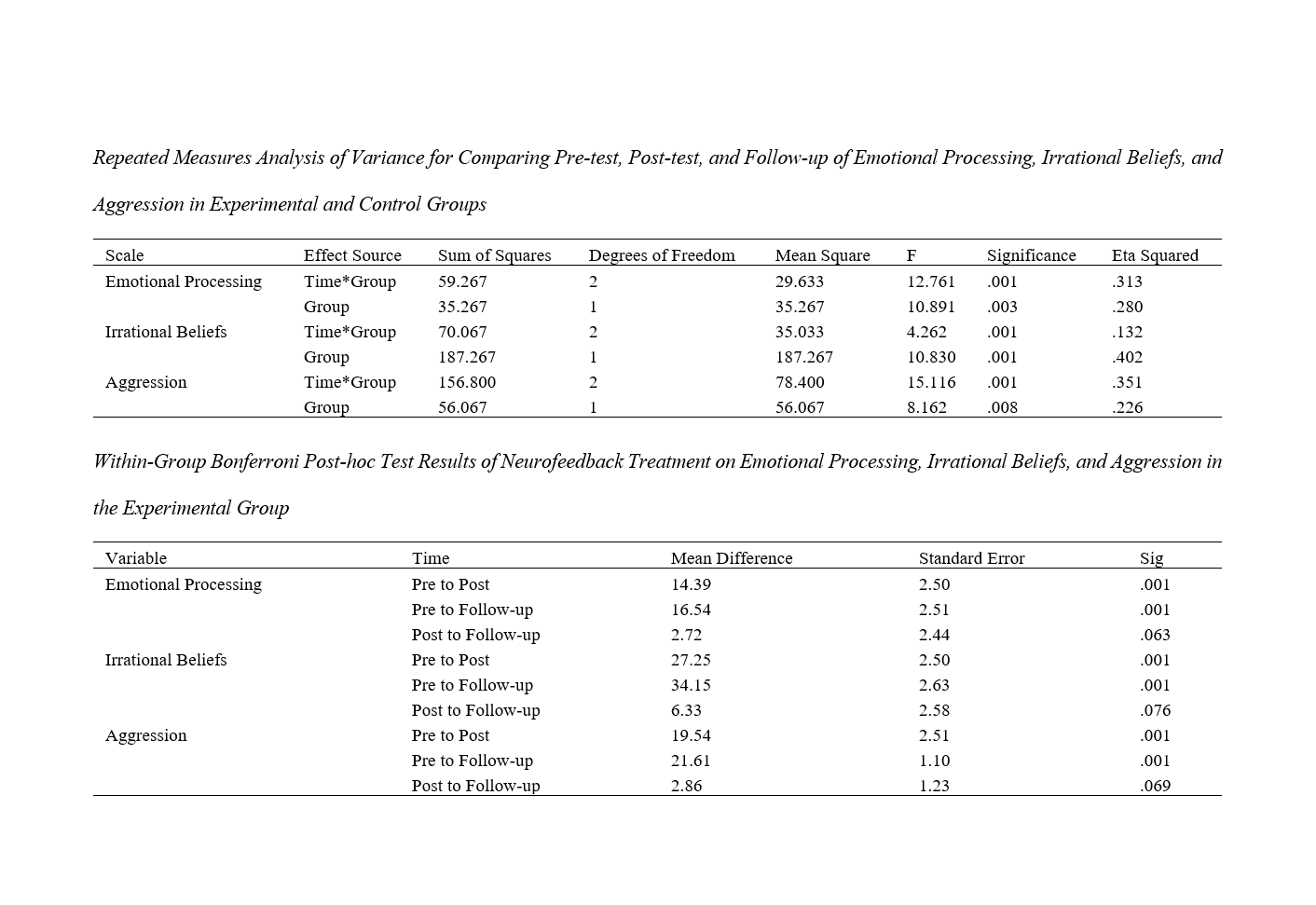Effectiveness of Neurofeedback Therapy on Emotional Processing, Irrational Beliefs, and Aggression in Female Patients with Generalized Anxiety Disorder
Keywords:
Emotional processing, neurofeedback therapy, irrational beliefs, aggressionAbstract
Objective: The present research aimed to examine the effectiveness of neurofeedback therapy on emotional processing, irrational beliefs, and aggression in patients with generalized anxiety disorder.
Method: This study was a quasi-experimental pre-test, post-test, and follow-up design with a control group. The research population comprised all women with generalized anxiety disorder visiting psychiatric treatment centers in Golpayegan in the first half of 2019, from which 30 female patients were purposefully selected based on inclusion criteria and randomly assigned to either the experimental or control groups. The experimental group received eight 30-minute sessions of neurofeedback therapy. Meanwhile, the control group did not receive this intervention during the research process. The questionnaires used in this research included the Spitzer Generalized Anxiety Scale (2006), the Baker Emotional Processing Scale (2007), the Jones Irrational Beliefs Questionnaire (1968), and the Buss and Perry Aggression Questionnaire (1992). Data were analyzed using repeated measures analysis of variance with SPSS-24 software.
Findings: The results of the data analysis indicated that neurofeedback therapy significantly affected emotional processing (F=10.89, P<0.001), irrational beliefs (F=10.83, P<0.001), and aggression (F=8.16, P<0.008).
Conclusion: Given the confirmed effectiveness of neurofeedback therapy on emotional processing, irrational beliefs, and aggression in patients with generalized anxiety disorder, it is recommended that workshops be organized to familiarize counselors and therapists more thoroughly with the principles and techniques of this treatment in the field of this disorder.
Downloads

Downloads
Additional Files
Published
Issue
Section
License

This work is licensed under a Creative Commons Attribution-NonCommercial 4.0 International License.




















